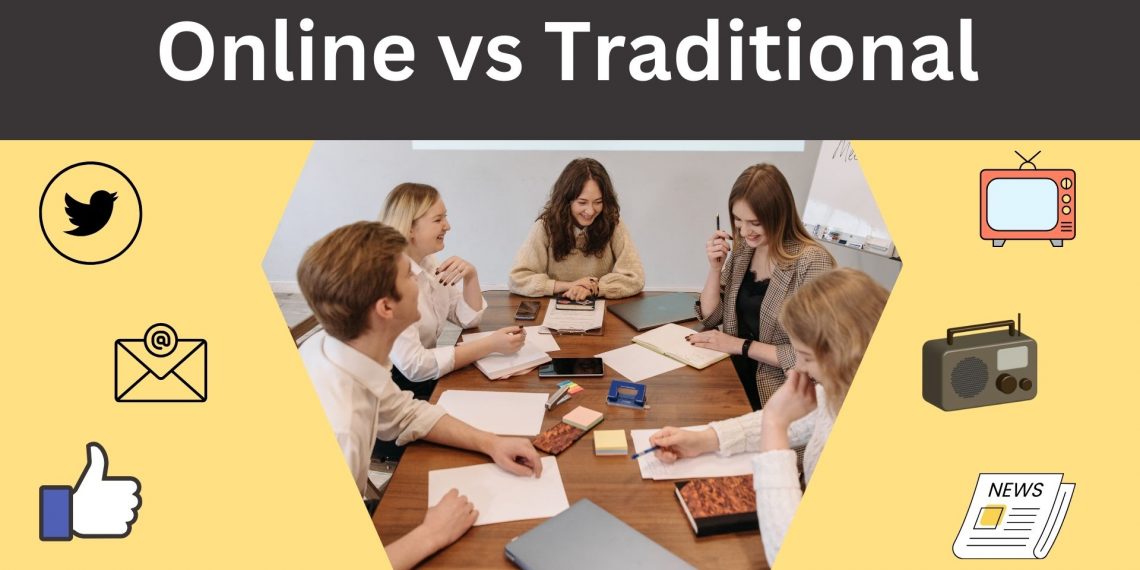The foundation of human contact is communication, which is essential for exchanging information, forming bonds with others, and promoting understanding. Both online and traditional communication methods have distinct benefits in the current digital era, meeting a range of demands and preferences. In this blog, we examine the advantages of conventional and virtual communication channels, examining how they work in concert to improve connectedness in the contemporary world.
The Power of Traditional Communication
For millennia, the predominant modes of communication have been face-to-face conversations, written correspondence, and phone calls. Even with the introduction of modern technologies, these techniques still have a number of important benefits:
Personal Connection
Face-to-face interactions allow for genuine human connection, enabling individuals to convey emotions, body language, and nuances that may be lost in digital communication. Whether it’s a heartfelt conversation with a loved one or a business meeting, face-to-face communication fosters trust and understanding.
Tangibility
Traditional communication channels offer tangible artifacts, such as handwritten letters or printed documents, which can evoke nostalgia and sentimental value. The physical presence of these items adds a personal touch that cannot be replicated in the digital realm.
Clarity and Authenticity
In situations where clarity and authenticity are paramount, traditional communication methods excel. Verbal cues, tone of voice, and facial expressions provide valuable context, reducing the likelihood of misunderstandings or misinterpretations.
Relationship Building
Building strong relationships often requires more than just words on a screen. Traditional communication allows individuals to build rapport, establish trust, and forge meaningful connections through shared experiences and genuine interactions.
Harnessing the Potential of Online Communication
With previously unheard-of levels of accessibility, speed, and ease, the emergence of digital technologies has completely changed communication in recent years. Email, social networking, and video conferencing are examples of online communication platforms that provide a number of advantages.
Global Reach
With online communication, geographic barriers are virtually eliminated, allowing individuals to connect with others across the globe instantly. Whether it’s collaborating with remote team members or engaging with an international audience, online platforms offer unparalleled reach and scalability.
Instantaneous Communication
In today’s fast-paced world, speed is of the essence. Online communication channels enable real-time interaction, facilitating swift decision-making, rapid information dissemination, and seamless collaboration.
Cost-Effectiveness
Compared to traditional communication methods, online channels often prove to be more cost-effective. Sending an email or hosting a video conference incurs minimal expenses, making it an economical choice for businesses, organizations, and individuals alike.
Diverse Multimedia Options
Online communication platforms offer a plethora of multimedia options, allowing users to communicate through text, images, videos, and audio recordings. This versatility enhances engagement and enables creative expression, catering to diverse communication preferences.
Synergy Between Traditional and Online Communication
Although internet and conventional communication channels have their own benefits, their full potential is only reached when they are combined. Individuals and organizations can get improved connectedness, efficiency, and effectiveness by utilizing the advantages of both mediums:
Integrated Communication Strategies
Integrating traditional and online communication strategies allows for a holistic approach to communication. For example, a marketing campaign may combine print advertisements with social media promotions to maximize reach and engagement.
Omnichannel Customer Engagement
In today’s digital marketplace, consumers expect seamless and consistent communication across multiple channels. By adopting an omnichannel approach, businesses can provide a cohesive customer experience, fostering loyalty and satisfaction.
Blended Learning Environments
In the realm of education, blending traditional classroom instruction with online learning platforms can enhance student engagement and flexibility. This hybrid approach accommodates diverse learning styles and preferences, catering to the needs of today’s learners.
Enhanced Productivity and Collaboration
By embracing both traditional and online communication tools, teams can enhance productivity and collaboration. For example, a combination of face-to-face meetings and virtual collaboration platforms can facilitate brainstorming, decision-making, and project management.




